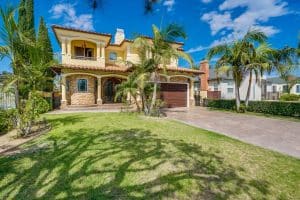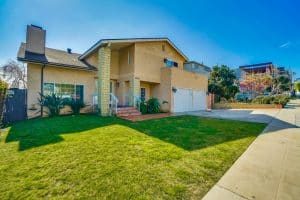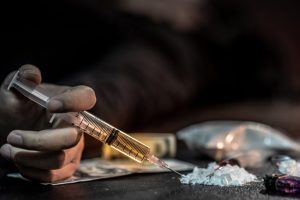Highland Park Sober Living and Drug Abuse Treatment
Highland Park is a neighborhood known for its population density and ethnic diversity. While these qualities provide a degree of cultural richness, there is a high amount of drug abuse in the neighborhood. Highland Park has a population of 60,841. The median income of Highland Park residents is $45478, which is about average compared to other neighborhoods in the county.
It is the 86th highest ranked neighborhood in the area for violent crimes and the 123rd ranked neighborhood for property crimes. Many of these crimes are linked to drug abuse and poverty, which themselves form a vicious cycle. Highland Park is also relatively close in proximity to Skid Row, which is where much of the city’s addiction and drug abuse is concentrated.
Drug Addiction Treatment in Highland Park
For those living in Highland Park and seeking an escape from drug abuse and addiction, there are many treatment options available. Highland Park and its surrounding neighborhoods are home to a thriving 12-step community. Additionally, rehabs, halfway houses, and sober living homes provide recovering addicts with safe spaces in which they can focus all of their energy on the process of recovery.
Staying in a Highland Park sober living home can be especially beneficial, as the dense and stimulating nature of the neighborhood can be triggering for those new to recovery. Recovering in the relative seclusion of a Highland Park sober living home, such as Design for Recovery, can allow recovering addicts to reintegrate into the world at a comfortable and unhurried pace that carries a far lower rate of relapse.
What to Look for in Highland Park Sober Living
Design for Recovery stands out from other Highland Park sober living homes not only because it is strongly rooted in the 12 Steps of Recovery, but because it is also a highly structured program centered on the principles of honesty, integrity, accountability, responsibility, and service. Addicts who are floundering in recovery and repeatedly relapsing can find lasting sobriety in Design for Recovery.
Design for Recovery is committed to the idea that recovery from drug addiction is about more than just the removal of substances from the body. The process of recovery involves dealing with the underlying issues behind the addiction as well as the development of a design for living in recovery. A new and lasting life in recovery involves firmly rooting recovering addicts in a sturdy foundation of principles, moral uprightness, and continued self-improvement.
Design for Recovery offers a number of services to aid addicts along their paths to recovery. These services include:
- One-on-One Mentoring
- House Unity Meetings
- Medication Monitoring
- Employment Support
- Money Management
- Family Outreach
The founders of Design for Recovery bring with them a wealth of experience in recovery and structured sober living. They are passionate about helping young men who are trapped in the cycle of substance abuse. The mission of Design for Recovery is to help these addicts rebuild their lives from the ground up, a process that is demanding yet carried out with a great deal of compassion. Through commitment to the Design for Recovery program, countless young men have been able to break free from the chains of addiction.
Anyone living in Highland Park who is suffering from drug and alcohol addiction would benefit from enrolling in Design for Recovery, which provides recovering addicts with a safe sober community and a structured program of behavior modification strongly rooted in the 12 steps. Its convenient location as well as its proven track record of helping addicts recover from substance abuse disorder makes Design for Recovery the clear solution for Highland Park addicts who are eager to find a newfound freedom and happiness.
Our beautiful Eagle Rock Sober Living home nestled in a quiet residential neighborhood.
Sober Living Homes Near Highland Park
Our residences are centrally located near the beach, downtown, and LAX international airport. We provide a safe and comfortable base for young men to involve themselves in the community and to thrive as new and growing individuals.
Frequently Asked Questions
A sober living home is a safe, substance-free residence for people recovering from addiction. It acts as a transitional housing option, bridging the gap between inpatient facilities and the real world. sober homes, usually located in quiet neighborhoods, help individuals reinforce their rehab lessons. They provide a cost-effective living environment and support sobriety. Sober living homes are peer-managed and expect residents to pursue better health and a substance-free life. They strictly enforce rules, with violations leading to eviction. Rules include signing a contract, attending support group meetings or outpatient treatment, and paying rent. Costs vary based on location and services.
The cost of residing in sober living homes in Highland Park can vary depending on factors such as the location, type of residence, available amenities, and the nature of the program. Monthly expenses range from $2,000 to $10,000. Some homes provide structure rather than a formal program, reducing costs. Utilities may be included or rationed. Rent is typically charged monthly, without requiring upfront payment. Resources like insurance, grants, sliding scale payments, and payment plans can help cover costs.
The length of stay at sober living houses in Highland Park are not fixed and can vary depending on the individual’s needs and the rules of the house. However, it is commonly advised to spend a minimum of 90 days in treatment and sober living before reintegrating into society.
Entering a sober living in Highland Park has numerous benefits for individuals in addiction recovery. These include:
- Safe and pressure-free living space
- Supportive environment promoting discipline and sobriety
- Reinforcement of rehab lessons
- Bridge between inpatient care and independent living
- Transition support from treatment to independent life
- Structured environment for regained stability
- Distance from triggers and temptations
- Connection with others in recovery for shared insights
- Job search/placement assistance
- Additional counseling
- Long-term residence option
- Improved physical and emotional well-being
Some sober living houses in Highland Park allow pets, while others do not. Pet-friendly homes offer benefits such as healing, joy, discipline, life lessons, unconditional love, and stress reduction. However, rules and regulations regarding pets vary by home, and residents must adhere to them if pets are allowed.
Read Further: Sober Living that Allows Pets
Yes, sober living in Highland Park does help residents find employment. These homes actively support residents in their job search and employment goals. They may require residents to be actively working or seeking employment while residing in the homes. Many sober living homes offer valuable resources and assistance to residents, such as resume writing, job application support, and skill training. Some homes even provide onsite job opportunities for residents as they transition out of the program. By promoting employment, sober living homes aim to help residents meet their financial responsibilities and develop a sense of accountability.
Visiting rules in a sober living home vary. Some homes may prohibit opposite-sex visitors or any drugs/alcohol. Approval is often required in advance, and curfews must be respected. Overnight guests are generally not allowed. Residents must show respect to housemates and staff. It’s important to inquire about specific visitor rules at each recovery home.
Design For Recovery also organizes regular events during which family members are invited to congregate with house members.
The rules regarding cell phones in sober living houses may vary depending on the specific sober living house. At Design For Recovery, we limit cell phone access for residents in the early days of their recovery. This gives them the opportunity to focus on their present circumstances and the present moment, cultivate real relationships with fellow house members, and look inward.
These policies may not necessarily apply to all sober living homes. Therefore, it’s recommended to ask each potential sober living house what their rules are regarding cell phones.
Highland Park Sober living homes offer alcohol- and drug-free environments for individuals maintaining abstinence. Expectations include:
- Safe community for physical, spiritual, and emotional growth with peer support
- Required sobriety, participation in meetings, and activities
- Guidelines like curfews, screenings, and respect for others
- Peer-managed homes supporting sobriety
- Live-in managers ensuring accountability
- Supportive community fostering sobriety and personal growth
- Varying costs and no-cost options available
The house rules for sober living homes in Highland Park may vary, but here are some common guidelines:
- Sobriety: Residents are required to maintain sobriety and abstain from alcohol and drug use while residing in the home.
- Meetings and Activities: Active participation in 12-step meetings, counseling sessions, or other recovery-related activities may be expected.
- Curfew: There might be a set curfew that residents need to adhere to, ensuring a structured routine and promoting responsibility.
- Drug Testing: Random or regular drug testing may be conducted to ensure compliance with the sobriety requirements.
- Chores and Responsibilities: Residents may be assigned household chores and responsibilities to maintain cleanliness and a sense of community.
- Respect for Others: Mutual respect and consideration for fellow residents’ privacy, boundaries, and recovery journeys are typically emphasized.
- Visitors and Guests: Guidelines regarding visitors and guests, such as limitations on visitation hours or prior approval requirements, might be in place.
- Financial Obligations: Residents are expected to pay rent and other associated expenses promptly and fulfill financial obligations.
- Supportive Environment: Creating a supportive and nurturing atmosphere, fostering personal growth, and encouraging peer support and accountability may be part of the house rules.
Staff members also enforce several sober living house rules designed to ensure a safe and healthy environment for residents.
Sober living homes provide a supportive environment for sobriety, offering:
- Substance-free space for real-world responsibilities
- Peer support from individuals with similar experiences
- Community support and encouragement
- Randomized drug and alcohol screenings
- Accountability through house rules
- Job assistance and connections to local employers
- Possible oversight from treatment providers
- Bridge between inpatient care and real-world transition
- Reinforcement of rehab lessons
- Safe space to develop habits and coping mechanisms
Amenities and services vary by sober living homes, so it’s best to inquire about specific offerings at each potential home.
The success rates of men’s sober living in Highland Park vary based on individual circumstances and dedication to recovery. However, research has shown that staying in a structured and supportive environment like a men’s transitional living significantly increases the chances of maintaining long-term sobriety compared to going directly back to independent living post-treatment.
Scholarships and financial aid are available for sober living. Options include:
- Grants for medical and living expenses
- Financial aid from treatment facilities
- Government grants from the Sober Living Foundation
- Healthcare grants for various medical needs
- No-cost options like halfway house programs
- State and federal funding, such as SAMHSA grants
Scholarship availability varies by program and location, so inquire about specific options at each sober living program.
Staying in a men’s sober living house long-term offers benefits for recovery:
- Smooth transition to daily life
- Ongoing support for lifelong recovery
- Reduces relapse risk by eliminating substances
- Eliminates triggers in early sobriety
- Provides structure and support
- Increases chances of long-term sobriety
- Offers job training and preparation
Benefits may vary by individual and program, so inquire about specific long-term benefits at each men’s transitional living house.
Finding the right sober living home can be challenging. Here are tips to help you:
- Determine your needs: Consider budget, structure, and privacy preferences.
- Research options: Look for local sober living homes and explore their programs and amenities.
- Visit and tour facilities: See if they meet your needs during a visit.
- Consider rules and structure: Look for consistent enforcement and adherence to house rules.
- Seek peer support: Choose homes with a supportive community of individuals with similar experiences.
- Look for job training and programs: Consider homes offering programs to aid long-term recovery.
Availability and offerings may vary, so research multiple options and visit facilities to find the best fit for you.


















